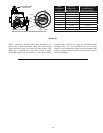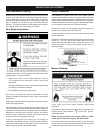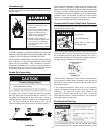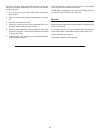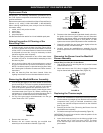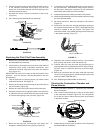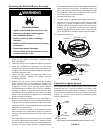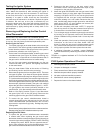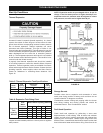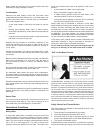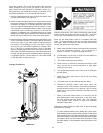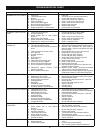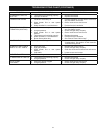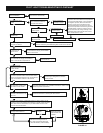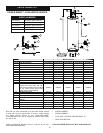
33
TROUBLESHOOTING GUIDE
Start Up Conditions
Thermal Expansion
As water is heated, it expands (thermal expansion). In a closed
system, the volume of water will grow. As the volume of water
grows, there will be a corresponding increase in water pressure
due to thermal expansion. Thermal expansion can cause
premature tank failure (leakage). This type of failure is not
covered under the limited warranty. Thermal expansion can also
cause intermittent temperature-pressure relief valve operation:
water discharged from the valve due to excessive pressure
build up. The temperature-pressure relief valve is not intended
for the constant relief of thermal expansion. This condition is not
covered under the limited warranty.
A properly sized thermal expansion tank should be installed
on all closed systems to control the harmful effects of thermal
expansion. Thermal expansion tanks are available from Sears
stores and through the Sears Service Centers. Contact the local
plumbing inspector, water supplier and/or the Sears Service
Center for assistance in controlling these situations. See
Figure 42.
Table 5: Thermal Expansion Tank Specifications
Tank Dimensions Pipe
Model Capacity in Inches Fitting
Number In Gallons Diameter Length On Tank
153.331020 2 8 (203 mm) 12-3/4 (323 mm) 3/4” Male
153.331050 5 11 (279 mm) 14-3/4 (375 mm) 3/4” Male
Table 6: Expansion Tank Sizing Chart
Inlet* Water Heater Capacity (Gallons)
Water
Pressure 30 40 50 66 82
Expansion 40psi 2 2 2 5 5
Tank 50psi 2 2 2 5 5
Capacity 60psi 2 2 5 5 5
Needed 70psi 2 2 5 5 5
80psi 2 5 5 5 5
*Highest recorded inlet water pressure in a 24 hour period or regulated
water pressure.
NOTE: Expansion tanks are pre-charged with a 40 psi air
charge. If the inlet water pressure is higher than 40 psi, the
expansion tank’s air pressure must be adjusted to match
that pressure, but must not be higher than 80 psi.
FIGURE 42.
Strange Sounds
Possible noises due to expansion and contraction of some
metal parts during periods of heat-up and cool-down do not
represent harmful or dangerous conditions.
Condensation causes sizzling and popping within the burner
area during heating and cooling periods and should be
considered normal. See “Condensation” section.
Draft Hood Operation
Check draft hood operation by performing a worst case
depressurization of the building. With all doors and windows
closed, and with all air handling equipment and exhaust fans
operating such as furnaces, clothes dryers, range hoods and
bathroom fans, a match flame should still be drawn into the draft
hood of the water heater with its burner firing. If the flame is not



